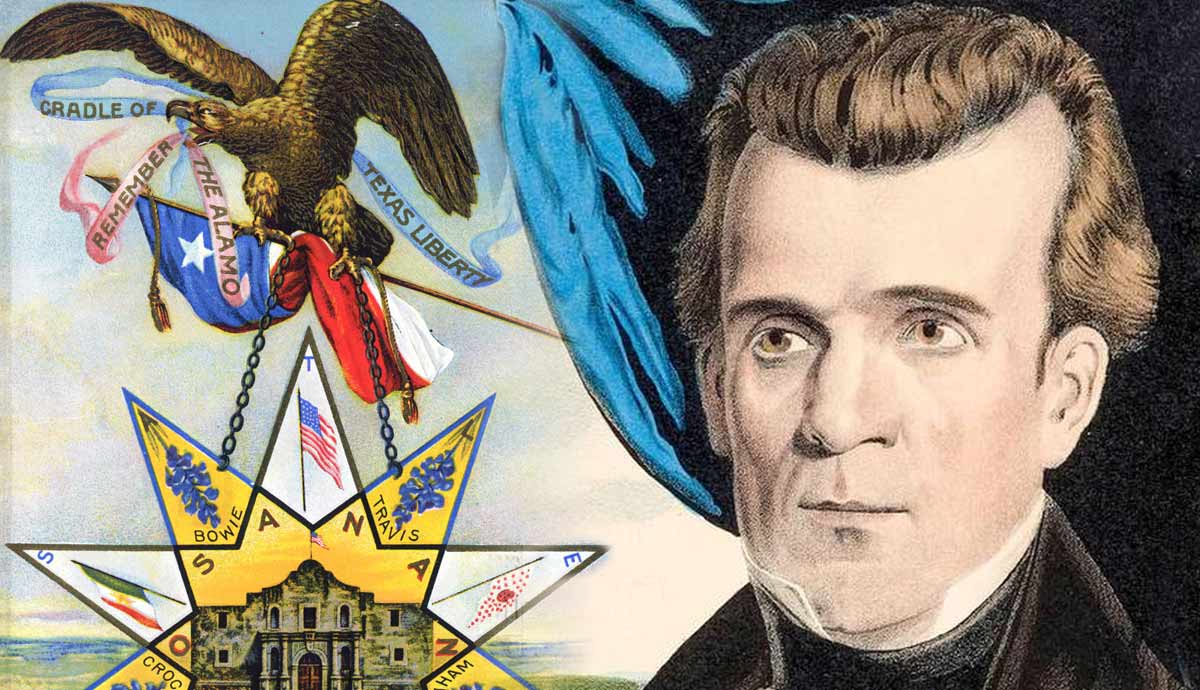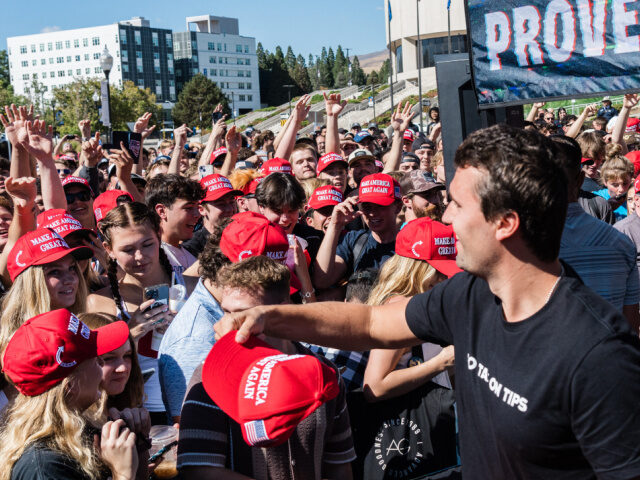0 Yorumlar
0 hisse senetleri
140 Views

Rehber
Elevate your Sngine platform to new levels with plugins from YubNub Digital Media!
-
Please log in to like, share and comment!
-
 YUBNUB.NEWSGrammar Girl: Jasmine Crockett Says Labeling Her Foes Wannabe Hitler Is Sometimes a Call to ViolenceOn Friday, grammar-impaired Democrat Jasmine Crockett admitted that if she calls you (meaning her political opponents) wannabe Hitler, it could mean she wants her followers to hurt you. We0 Yorumlar 0 hisse senetleri 143 Views
YUBNUB.NEWSGrammar Girl: Jasmine Crockett Says Labeling Her Foes Wannabe Hitler Is Sometimes a Call to ViolenceOn Friday, grammar-impaired Democrat Jasmine Crockett admitted that if she calls you (meaning her political opponents) wannabe Hitler, it could mean she wants her followers to hurt you. We0 Yorumlar 0 hisse senetleri 143 Views -
 WWW.THECOLLECTOR.COMWhat Caused the Mexican-American War?While the United States and Mexico have experienced a positive diplomatic and economic relationship in recent decades, the history of the two North American neighbors was not always defined by mutual partnership. In 1848, two years of fighting the Mexican-American War resulted in a major expansion of American territory, alongside secondary effects that led the country down the path of civil war. To fully understand the conflict, one must investigate the events, policies, and ambitions that triggered the countries into war in 1846.Historical ContextPortrait of General Andrew Jackson by Ralph Eleaser Whiteside Earl, 1835. Source: Smithsonian InstitutionWhile the Mexican-American War did not boil over into armed hostilities until 1846, the previous three and a half decades following the War of 1812 provide a comprehensive picture of the historical context leading the United States to war. During its early years as an independent power, the United States was subject to international influence that undermined the values of the American republic.While the United States secured formal independence from Britain in the American Revolutionary War, the British continued to disrupt American trade and challenge control of frontier regions in North America. These factors led to the War of 1812, which although inconclusive, left the United States free to pursue its westward expansion largely free from European interference.In the decades following the War of 1812, American political, economic, and military efforts focused on fostering economic development and enhancing the countrys presence on the international stage. This national mindset, spearheaded by War of 1812 military leaders including presidents Andrew Jackson, William Henry Harrison, and John Tyler, involved dispossessing Native American peoples of their ancestral lands in order to open them up for agricultural development. Such policies were justified by the idea of Manifest Destiny, one of the most significant causes of the Mexican-American War.Manifest Destiny and American ExpansionismBicentennial stamp depicting the Louisiana Purchase printed by the American Packaging Corporation, 2003. Source: Smithsonian InstitutionAlthough the term Manifest Destiny was not coined until 1845, the ideology guided political, economic, and military actions of the United States for much of the 19th century. The belief, marked by an irrational perception that the United States was inherently and spiritually fated to bring civilization and democratic government to North America, encouraged political leaders and ambitious private citizens to expand Americas frontiers wherever possible.In 1803, the United States increased its land mass by nearly double under President Thomas Jefferson via the Louisiana Purchase from France. The newly obtained land was explored by early adventurers such as Meriwether Lewis and William Clark. However, the territory stretching from the Mississippi River to the Rocky Mountains would take decades to fully survey, settle, and develop. As western pioneers traveled into unknown territories, they faced resistance from Native American groups, disease, and hunger. However, the territory acquired from the Louisiana Purchase was not enough to fulfill the visions of Manifest Destiny, which envisaged the United States extending from the Atlantic to the Pacific Coast.The United States desired additional regions near the Pacific Ocean and Mexican border, specifically California, New Mexico, and Texas. Although American leaders initially sought peaceful solutions, American settlement into these regions often provoked armed conflict. A decade before formal hostilities erupted between the United States and Mexico, American settlers in Texas rebelled against the Mexican government and declared independence.Texas Independence and AnnexationRemember the Alamo painting by W. R. Elliot, 1913. Source: Smithsonian InstitutionIn 1821, Mexico gained its independence from the Spanish Empire after eleven years of war. Following this newfound freedom, Americas southern neighbor encouraged settlers from the United States to move to Texas to help economically develop the region. Before long, however, cultural and social differences led to political tensions.Leading up to the Texas Revolution, Mexican citizens and American settlers clashed on political issues including the dictatorial powers and restrictive immigration policies of General Antonio Lpez de Santa Anna. There were also disagreements between the parties about slavery. While Mexico largely abolished the practice in 1829, new arrivals sought to use slaves to exploit the regions untapped resources. By 1835, these differences boiled over into armed resistance, sparking the Texas Revolution.The Texas Revolution witnessed an intense year-long struggle between the American settlers and the Mexican authorities. The brave defense by outnumbered Texan revolutionaries at the Siege of the Alamo for two weeks inspired a wave of moral support across the United States. Shortly after the fall of the Alamo, Mexican troops executed over 300 Texan prisoners at the Goliad Massacre, further empowering the revolutionaries to resist. By April 1836, General Sam Houston and his Texan troops formally secured the territorys independence by defeating Santa Anna and taking him prisoner at the Battle of San Jacinto.Following the Texas Revolution, many individuals in the region favored annexation into the United States. Political disputes in the United States over slavery meant that the Republic of Texas remained an independent entity for almost a decade, but in March 1845 President John Tyler began the process of annexation, which was formally completed by President James K. Polk at the end of the year.Diplomatic InitiativesPortrait of President James Polk by Nathaniel Currier, 1845-1849. Source: Smithsonian InstitutionAs the United States annexed Texas, resulting border disagreements instigated the first armed exchanges of the Mexican-American War. While the United States asserted that Texas southern boundary was marked extended to the Rio Grande River, Mexico declared that the Nueces River, approximately one hundred miles north, was the proper frontier. The land between these two waterways became a disputed area between the North American neighbors.While both sides prepared for war, the United States attempted one last-ditch effort at diplomacy. In late 1845, President Polk sent John Slidell, a politician and lawyer from Louisiana, as a special envoy to Mexico to negotiate an end to the border dispute and to offer to purchase California and New Mexico for $30 million. Since Mexico refused to recognize the annexation of Texas, Mexican President Mariano Paredes y Arrillaga refused to meet with Slidell.The failure of Slidells mission encouraged both sides to seek a military solution to the Texas issue. Determined to establish a strong presence near Texass southern border based on a recommendation by Slidell after the unsuccessful peace talks, Polk deployed American troops under future president General Zachary Taylor to the disputed region. As Polk had anticipated, this deliberately provoked Mexican soldiers to fire the first shots of the Mexican-American War, initiating one of the most consequential conflicts in American history.Economic CausesPhotograph of Cornelius Vanderbilt by Mathew Brady Studio, mid-nineteenth century. Source: Smithsonian InstitutionAlongside religious and civilizational justifications, American visions of Manifest Destiny were driven by economic justifications. Following the costly American Revolutionary War and the War of 1812, the United States economy struggled with indebtedness, inflation, an unstable currency, and regular economic downturns. In the decades after independence, the American economy was largely agrarian, with industrialization limited largely to the northeast.In the period leading up to the Mexican-American War, the United States economy witnessed its first major growth in the countrys history. Encouraged by businessmen like John Deere and Cornelius Vanderbilt, whose farming equipment and railroads allowed Americans to exploit the newly acquired western territories more effectively, the United States sought to expand further towards the Pacific. While the Pacific Northwest was claimed by Britain, the southwestern territories were part of Mexico and presented a roadblock to further economic expansion.The port regions of California presented significant opportunities for international trade with Asia. Southern territories like Texas and New Mexico offered varying degrees of agricultural prospects, ranching, and trade with Native American tribes. Americans initially sought to exploit these opportunities by circumventing the local authorities in both Mexico and Texas, but it was not until victory in the Mexican-American War that the United States could gain full control.Outbreak of WarPresident Zachary Taylor by Albert Newsam, 1848. Source: Smithsonian InstitutionWhen Mexican forces first attacked American troops in the disputed border region of Texas between the Rio Grande and Nueces Rivers, President Polk exploited the incident as a call to arms for the United States. In a plea to Congress on May 11, 1846, President Polk voiced that the Mexicans had shed American blood on American soil, and two days later, the United States officially declared war on Mexico.American forces rapidly mobilized to engage the enemy in Texas and Mexico. General Zachary Taylor marched from Corpus Christi to the Rio Grande, where they soon engaged Mexican forces at the Battle of Palo Alto, the first major engagement of the conflict. Simultaneously, another American column moved against New Mexico and California. General Stephen Kearny swiftly captured Santa Fe before moving on to California. The campaign narrowed its focus on the vital port cities before finally securing Los Angeles.Two years of hostilities resulted in American victory after Winfield Scotts forces landed at Veracruz in March 1847 and seized Mexico City in September. On February 2, 1848, both parties signed the Treaty of Guadalupe Hidalgo to bring an end to the Mexican-American War. The agreement gave the United States a large amount of territory, satisfying many of the expansionist causes of the conflict.0 Yorumlar 0 hisse senetleri 148 Views
WWW.THECOLLECTOR.COMWhat Caused the Mexican-American War?While the United States and Mexico have experienced a positive diplomatic and economic relationship in recent decades, the history of the two North American neighbors was not always defined by mutual partnership. In 1848, two years of fighting the Mexican-American War resulted in a major expansion of American territory, alongside secondary effects that led the country down the path of civil war. To fully understand the conflict, one must investigate the events, policies, and ambitions that triggered the countries into war in 1846.Historical ContextPortrait of General Andrew Jackson by Ralph Eleaser Whiteside Earl, 1835. Source: Smithsonian InstitutionWhile the Mexican-American War did not boil over into armed hostilities until 1846, the previous three and a half decades following the War of 1812 provide a comprehensive picture of the historical context leading the United States to war. During its early years as an independent power, the United States was subject to international influence that undermined the values of the American republic.While the United States secured formal independence from Britain in the American Revolutionary War, the British continued to disrupt American trade and challenge control of frontier regions in North America. These factors led to the War of 1812, which although inconclusive, left the United States free to pursue its westward expansion largely free from European interference.In the decades following the War of 1812, American political, economic, and military efforts focused on fostering economic development and enhancing the countrys presence on the international stage. This national mindset, spearheaded by War of 1812 military leaders including presidents Andrew Jackson, William Henry Harrison, and John Tyler, involved dispossessing Native American peoples of their ancestral lands in order to open them up for agricultural development. Such policies were justified by the idea of Manifest Destiny, one of the most significant causes of the Mexican-American War.Manifest Destiny and American ExpansionismBicentennial stamp depicting the Louisiana Purchase printed by the American Packaging Corporation, 2003. Source: Smithsonian InstitutionAlthough the term Manifest Destiny was not coined until 1845, the ideology guided political, economic, and military actions of the United States for much of the 19th century. The belief, marked by an irrational perception that the United States was inherently and spiritually fated to bring civilization and democratic government to North America, encouraged political leaders and ambitious private citizens to expand Americas frontiers wherever possible.In 1803, the United States increased its land mass by nearly double under President Thomas Jefferson via the Louisiana Purchase from France. The newly obtained land was explored by early adventurers such as Meriwether Lewis and William Clark. However, the territory stretching from the Mississippi River to the Rocky Mountains would take decades to fully survey, settle, and develop. As western pioneers traveled into unknown territories, they faced resistance from Native American groups, disease, and hunger. However, the territory acquired from the Louisiana Purchase was not enough to fulfill the visions of Manifest Destiny, which envisaged the United States extending from the Atlantic to the Pacific Coast.The United States desired additional regions near the Pacific Ocean and Mexican border, specifically California, New Mexico, and Texas. Although American leaders initially sought peaceful solutions, American settlement into these regions often provoked armed conflict. A decade before formal hostilities erupted between the United States and Mexico, American settlers in Texas rebelled against the Mexican government and declared independence.Texas Independence and AnnexationRemember the Alamo painting by W. R. Elliot, 1913. Source: Smithsonian InstitutionIn 1821, Mexico gained its independence from the Spanish Empire after eleven years of war. Following this newfound freedom, Americas southern neighbor encouraged settlers from the United States to move to Texas to help economically develop the region. Before long, however, cultural and social differences led to political tensions.Leading up to the Texas Revolution, Mexican citizens and American settlers clashed on political issues including the dictatorial powers and restrictive immigration policies of General Antonio Lpez de Santa Anna. There were also disagreements between the parties about slavery. While Mexico largely abolished the practice in 1829, new arrivals sought to use slaves to exploit the regions untapped resources. By 1835, these differences boiled over into armed resistance, sparking the Texas Revolution.The Texas Revolution witnessed an intense year-long struggle between the American settlers and the Mexican authorities. The brave defense by outnumbered Texan revolutionaries at the Siege of the Alamo for two weeks inspired a wave of moral support across the United States. Shortly after the fall of the Alamo, Mexican troops executed over 300 Texan prisoners at the Goliad Massacre, further empowering the revolutionaries to resist. By April 1836, General Sam Houston and his Texan troops formally secured the territorys independence by defeating Santa Anna and taking him prisoner at the Battle of San Jacinto.Following the Texas Revolution, many individuals in the region favored annexation into the United States. Political disputes in the United States over slavery meant that the Republic of Texas remained an independent entity for almost a decade, but in March 1845 President John Tyler began the process of annexation, which was formally completed by President James K. Polk at the end of the year.Diplomatic InitiativesPortrait of President James Polk by Nathaniel Currier, 1845-1849. Source: Smithsonian InstitutionAs the United States annexed Texas, resulting border disagreements instigated the first armed exchanges of the Mexican-American War. While the United States asserted that Texas southern boundary was marked extended to the Rio Grande River, Mexico declared that the Nueces River, approximately one hundred miles north, was the proper frontier. The land between these two waterways became a disputed area between the North American neighbors.While both sides prepared for war, the United States attempted one last-ditch effort at diplomacy. In late 1845, President Polk sent John Slidell, a politician and lawyer from Louisiana, as a special envoy to Mexico to negotiate an end to the border dispute and to offer to purchase California and New Mexico for $30 million. Since Mexico refused to recognize the annexation of Texas, Mexican President Mariano Paredes y Arrillaga refused to meet with Slidell.The failure of Slidells mission encouraged both sides to seek a military solution to the Texas issue. Determined to establish a strong presence near Texass southern border based on a recommendation by Slidell after the unsuccessful peace talks, Polk deployed American troops under future president General Zachary Taylor to the disputed region. As Polk had anticipated, this deliberately provoked Mexican soldiers to fire the first shots of the Mexican-American War, initiating one of the most consequential conflicts in American history.Economic CausesPhotograph of Cornelius Vanderbilt by Mathew Brady Studio, mid-nineteenth century. Source: Smithsonian InstitutionAlongside religious and civilizational justifications, American visions of Manifest Destiny were driven by economic justifications. Following the costly American Revolutionary War and the War of 1812, the United States economy struggled with indebtedness, inflation, an unstable currency, and regular economic downturns. In the decades after independence, the American economy was largely agrarian, with industrialization limited largely to the northeast.In the period leading up to the Mexican-American War, the United States economy witnessed its first major growth in the countrys history. Encouraged by businessmen like John Deere and Cornelius Vanderbilt, whose farming equipment and railroads allowed Americans to exploit the newly acquired western territories more effectively, the United States sought to expand further towards the Pacific. While the Pacific Northwest was claimed by Britain, the southwestern territories were part of Mexico and presented a roadblock to further economic expansion.The port regions of California presented significant opportunities for international trade with Asia. Southern territories like Texas and New Mexico offered varying degrees of agricultural prospects, ranching, and trade with Native American tribes. Americans initially sought to exploit these opportunities by circumventing the local authorities in both Mexico and Texas, but it was not until victory in the Mexican-American War that the United States could gain full control.Outbreak of WarPresident Zachary Taylor by Albert Newsam, 1848. Source: Smithsonian InstitutionWhen Mexican forces first attacked American troops in the disputed border region of Texas between the Rio Grande and Nueces Rivers, President Polk exploited the incident as a call to arms for the United States. In a plea to Congress on May 11, 1846, President Polk voiced that the Mexicans had shed American blood on American soil, and two days later, the United States officially declared war on Mexico.American forces rapidly mobilized to engage the enemy in Texas and Mexico. General Zachary Taylor marched from Corpus Christi to the Rio Grande, where they soon engaged Mexican forces at the Battle of Palo Alto, the first major engagement of the conflict. Simultaneously, another American column moved against New Mexico and California. General Stephen Kearny swiftly captured Santa Fe before moving on to California. The campaign narrowed its focus on the vital port cities before finally securing Los Angeles.Two years of hostilities resulted in American victory after Winfield Scotts forces landed at Veracruz in March 1847 and seized Mexico City in September. On February 2, 1848, both parties signed the Treaty of Guadalupe Hidalgo to bring an end to the Mexican-American War. The agreement gave the United States a large amount of territory, satisfying many of the expansionist causes of the conflict.0 Yorumlar 0 hisse senetleri 148 Views -
 YUBNUB.NEWSThe Bloody Hands of the Radical LeftLoony Liberals Inciting Political Violence While Blaming Patriots for Their Own Sins Fellow patriots, fed-up conservatives who are sick to death of watching our Republic bleed out under the onslaught0 Yorumlar 0 hisse senetleri 141 Views
YUBNUB.NEWSThe Bloody Hands of the Radical LeftLoony Liberals Inciting Political Violence While Blaming Patriots for Their Own Sins Fellow patriots, fed-up conservatives who are sick to death of watching our Republic bleed out under the onslaught0 Yorumlar 0 hisse senetleri 141 Views -
 YUBNUB.NEWSErika Kirk Vows to Carry Forward Husband Charlie Kirks Legacy in Powerful First Public AddressBy Gloria Ogbonna Erika Kirk, widow of Turning Point USA founder Charlie Kirk, delivered her first public remarks on Friday following the shocking assassination of her husband earlier this week. Speaking0 Yorumlar 0 hisse senetleri 143 Views
YUBNUB.NEWSErika Kirk Vows to Carry Forward Husband Charlie Kirks Legacy in Powerful First Public AddressBy Gloria Ogbonna Erika Kirk, widow of Turning Point USA founder Charlie Kirk, delivered her first public remarks on Friday following the shocking assassination of her husband earlier this week. Speaking0 Yorumlar 0 hisse senetleri 143 Views -
 YUBNUB.NEWSOne-Third of College Students Believe Violence Can Be Justified to Silence Campus Speech, Survey ShowsA nationwide survey of more than 68,000 students reveals alarming support for using violence or obstruction to stop controversial speakers on campus. By yourNEWS Media Newsroom A new survey has found0 Yorumlar 0 hisse senetleri 145 Views
YUBNUB.NEWSOne-Third of College Students Believe Violence Can Be Justified to Silence Campus Speech, Survey ShowsA nationwide survey of more than 68,000 students reveals alarming support for using violence or obstruction to stop controversial speakers on campus. By yourNEWS Media Newsroom A new survey has found0 Yorumlar 0 hisse senetleri 145 Views -
 YUBNUB.NEWSRanchers Warn Solar Boom Is Turning Grazing Land Into Dust BowlGenerational ranchers say federal subsidies and solar companies are wiping out farmland near Joseph City, leaving behind barren tracts and displacing livestock. By yourNEWS Media Newsroom Ranchers in0 Yorumlar 0 hisse senetleri 141 Views
YUBNUB.NEWSRanchers Warn Solar Boom Is Turning Grazing Land Into Dust BowlGenerational ranchers say federal subsidies and solar companies are wiping out farmland near Joseph City, leaving behind barren tracts and displacing livestock. By yourNEWS Media Newsroom Ranchers in0 Yorumlar 0 hisse senetleri 141 Views -
 WWW.LIVESCIENCE.COMWhere could alien life exist in our solar system?The solar system has eight planets and hundreds of moons. Could extraterrestrials live on any of them?0 Yorumlar 0 hisse senetleri 151 Views
WWW.LIVESCIENCE.COMWhere could alien life exist in our solar system?The solar system has eight planets and hundreds of moons. Could extraterrestrials live on any of them?0 Yorumlar 0 hisse senetleri 151 Views -
Martian Mudstone Has Features That Might Be Biosignatures, New Brain Implant Can Decode Your Internal Monologue, And Much More This WeekMartian Mudstone Has Features That Might Be Biosignatures, New Brain Implant Can Decode Your Internal Monologue, And Much More This WeekThis week, scientists may have found a universal weak spot for nearly every tested flu strain using a carefully designed triple antibody cocktail, an animal with 229 pairs of chromosomes is officially declared to have the most chromosomes of any animal, and,...0 Yorumlar 0 hisse senetleri 698 Views
-
ESO boss says the goal is still to make a "30-year MMO," even after Xbox layoffsESO boss says the goal is still to make a "30-year MMO," even after Xbox layoffs On Wednesday July 2, 2025, Xbox laid off over 9,000 employees across its studios. This included the likes of Activision Blizzard, Bethesda, and, of course, Zenimax Online Studios, creator of The Elder Scrolls Online. Later that evening, Bloomberg's Jason Schreier received confirmation that the studio's...0 Yorumlar 0 hisse senetleri 721 Views



